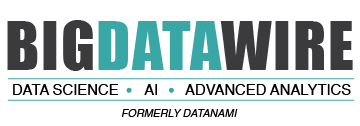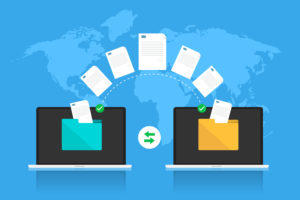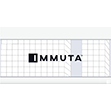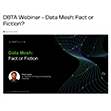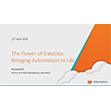

(Yurchanka-Siarhei/Shutterstock)
It’s no secret that deep learning lets data science practitioners reach new levels of accuracy with predictive models. However, one of the drawbacks of deep learning is it typically requires huge data sets (not to mention big clusters). But with a little skill, practitioners with smaller data sets can still partake of deep learning riches.
Deep learning has exploded in popularity, with good reason: Deep learning approaches, such as convolutional neural networks (used primarily for image data) and recurrent neural networks (used primarily for language and textual data) can deliver higher accuracy and precision compared to “classical” machine learning approaches, like regression algorithms, gradient-boosted trees, and support vector machines.
But that higher accuracy comes at a cost. Deep learning models are much more complex and typically require much more data to deliver better predictions. And of course, running all that data requires more computer horsepower, typically in the form of GPU-equipped clusters. It’s no wonder that the world’s leaning practitioners of deep learning are companies with names like Google, Facebook, and Microsoft, which have a ton of data and compute capacity on which to develop and train advanced predictive models.
Size does matter, but that doesn’t leave mere data mortals out in the cold. With the right techniques, data scientists and machine learning engineers can get in on the deep learning action, but without a huge corpus of training data up front.
One of the technologists with a lot of experience making the most of smaller data is Vaibhav Nivargi, the CTO and co-founder of Moveworks, which develops IT ticket automation software. The company is just three-and-a-half years old and is backed by some of the top venture capitalists in Silicon Valley. But it doesn’t have a ton of IT tickets on which to train its predictive models, which posed a challenge to Nivargi.
“IT tickets are not really the most voluminous types of data,” Nivargi says. “Even if you have a customer with several thousand employees, it’s a relatively infrequent activity to file an IT ticket. The data sets are relatively sparse and small. To be able to leverage more sophisticated techniques, running at very high levels of accuracy and precision, is highly non-trivial.”
Under Nivargi’s watch, Moveworks has swung above its weight and developed deep learning models that are much more accurate and precise compared to traditional machine learning approaches. These three techniques detail how he did it.
Transfer Learning
Transfer learning is arguably the most basic approach to leveraging powerful deep learning approaches when you don’t have the data to develop a more custom solution. At its most basic level, it’s a copy and paste approach: You copy a deep learning model that’s already been developed, but paste your custom code into the last layer that develops the final prediction.
Moveworks adopted BERT, a recurrent network model developed and open sourced by Google for natural language understanding, as the basis for one of the deep learning models it uses to understand the words that its customers use as they interact with an IT help desk.
“Think of transfer learning as fine tuning,” Nivargi tells Datanami. “You already have something that’s reasonably working, but you want to make it work for your use case. You take most of what it has learned, and you just change the last few steps.”
Collective Learning
Collective learning is a technique that can be used to amplify your existing sparse data to generate new data that’s very close to the distribution of real world data. More data, of course, equals better results in a deep learning model.
Using collective learning techniques to boost the available corpus of training data in the computer vision domain is fairly straightforward. “You can take the image and tweak the contrast,” Nivargi says. “Or you can rotate the image or chop off the sides, and now you have 3x to 4x that data.”
It’s trickier to do in the language domain, because you can’t just chop off the end of words or add random words and punctuation. But with enough care in the hands of a knowledgeable practitioner, the collective learning approach can also be used to boost an existing data set and provide more collections of words to feed into the recurrent neural network.
“We have language like ‘I’m trying to set up a meeting with X’ or ‘I’m getting error Y. Can you help me?’” Nivargi says. “You can substitute a meeting with Zoom or WebEx or GoToMeeting, and mix and match the preamble and the problem, and still get data that is very realistic.”
Meta Learning
Meta learning, which is sometimes called n-shot or multi-shot learning, is another powerful data-boosting technique. According to Nivargi, Moveworks uses meta learning to create additional dimensions of the data, which allows the deep learning models to better understand the shape of the data.
Let’s say I see an IT ticket that says ‘I need access to the dashboard so I can publish a metric,’” Nivargi says. “It’s perfectly valid, syntactical English. It’s meaningful. But it’s completely incomplete. We don’t know what kind of dashboard.”
To fill in the blanks and drive toward a greater understanding of what that employee meant, Moveworks employs a meta learning approach that applies context to the statement. The approach uses available metadata to make a guess about what the employee meant.
“You can use an example of what department the employee works in, or the time of day,” Nivargi says. “If the employee in in marketing, there’s a good chance they’re talking about the Salesforce dashboard. If they’re in engineering, there’s a good chance they’re talking about the Jira dashboard.”
DL for the Masses
Collectively, these three techniques let Moveworks specifically amplify this data to a very high volume, Nivargi says.
Transfer learning has a bootstrap phenomenon, where you can start from a strong base and then adapt to your domain,” he says. “Collective learning has a network effective. And meta learning can take data from N dimensions and add several hundred dimensions more. So all of these are cumulatively very, very powerful.”
Moveworks employs a wide variety of supervised and unsupervised machine learning and deep learning models to help understand the meaning of IT help desk tickets. Some models are universal and some are customer-specific and some are ensembles. Like most companies active in data science, it’s found some techniques work well in some domains, while other approaches require completely different approaches.
In the early days of the company, Moveworks hit a wall with traditional machine learning models. One of them was “saturated” at around 82% accuracy. “It would simply not learn above that,” Nivargi says. “The model would plateau.”
After employing some of the transfer learning, collective learning, and meta learning tricks discussed here, Moveworks had enough data to keep the bigger deep learning models flush with data. As a result, the models are more accurate.
“Some of our models now can be deployed in production in the high 90s, 90% to 96% precision, and we can have very high coverage as well,” he says. “So now we can use extremely powerful and sophisticated deep learning techniques without requiring the same kind of inherent data that a Google or Facebook or Microsoft has.”
Related Items:
Deep Learning: The Confluence of Big Data, Big Models, Big Compute
Deep Learning Has Hit a Wall, Intel’s Rao Says
What’s the Difference Between AI, ML, Deep Learning, and Active Learning?
April 18, 2025
- Snowflake and PostgreSQL Among Top Climbers in DB-Engines Rankings
- Capital One Software Unveils Capital One Databolt to Help Companies Tokenize Sensitive Data at Scale
- DataVisor Named a Leader in Forrester Wave for AML Solutions, Q2 2025
- GitLab Announces the General Availability of GitLab Duo with Amazon Q
- Anthropic Joins Palantir’s FedStart Program to Deploy Claude Application
- SnapLogic Announces Partnership with Glean to Transform the Agentic Enterprise
April 17, 2025
- Qlik Highlights Real-World Enterprise AI at Qlik Connect 2025 with Lenovo, Visa, and Reworld
- SnapLogic Ushers in the Era of Infinite AI Workforce for the Agentic Enterprise With AgentCreator 3.0
- Devo Highlights Analyst Overload in Push Toward Alertless SOC
- InfluxData Launches InfluxDB 3 Core and Enterprise for Real-Time Time Series Data
- Informatica and Carnegie Mellon University Partner to Drive Innovation in GenAI for Data Management
- SnapLogic Unveils Next-Gen API Management Solution to Power the Composable and Agentic Enterprise
- Monte Carlo Launches Observability Agents To Accelerate Data + AI Monitoring and Troubleshooting
- Berkeley Lab Spotlights Efficient Method for Faster Topological Data Analysis
- Vultr Recognized for Strength in Data Sovereignty and Security in 2025 Omdia Sovereign Cloud Report
April 16, 2025
- Fluidstack Selects VAST Data to Deliver Infrastructure to Accelerate Global Frontier AI Model Training
- Bauplan Launches with $7.5M in Seed to Bring AI & Data Infrastructure into Software Engineering
- AI is Driving a Surge in Data Budgets, According to New Report from dbt Labs
- Cloudera Survey Finds 96% of Enterprises Plan to Expand AI Agent Use in 2025
- Snowflake Research: 92% of Early Adopters See ROI from AI Investments
- PayPal Feeds the DL Beast with Huge Vault of Fraud Data
- OpenTelemetry Is Too Complicated, VictoriaMetrics Says
- Will Model Context Protocol (MCP) Become the Standard for Agentic AI?
- Accelerating Agentic AI Productivity with Enterprise Frameworks
- When Will Large Vision Models Have Their ChatGPT Moment?
- Thriving in the Second Wave of Big Data Modernization
- What Benchmarks Say About Agentic AI’s Coding Potential
- Google Cloud Fleshes Out its Databases at Next 2025, with an Eye to AI
- Can We Learn to Live with AI Hallucinations?
- Google Cloud Preps for Agentic AI Era with ‘Ironwood’ TPU, New Models and Software
- More Features…
- Grafana’s Annual Report Uncovers Key Insights into the Future of Observability
- Google Cloud Cranks Up the Analytics at Next 2025
- Reporter’s Notebook: AI Hype and Glory at Nvidia GTC 2025
- New Intel CEO Lip-Bu Tan Promises Return to Engineering Innovation in Major Address
- AI One Emerges from Stealth to “End the Data Lake Era”
- Excessive Cloud Spending In the Spotlight
- Mathematica Helps Crack Zodiac Killer’s Code
- Big Growth Forecasted for Big Data
- New Benchmark for Real-Time Analytics Released by Timescale
- Big Data Career Notes for March 2025
- More News In Brief…
- Gartner Predicts 40% of Generative AI Solutions Will Be Multimodal By 2027
- MinIO: Introducing Model Context Protocol Server for MinIO AIStor
- Dataiku Achieves AWS Generative AI Competency
- AMD Powers New Google Cloud C4D and H4D VMs with 5th Gen EPYC CPUs
- Deloitte Survey Finds AI Use and Tech Investments Top Priorities for Private Companies in 2024
- Prophecy Introduces Fully Governed Self-Service Data Preparation for Databricks SQL
- Seagate Unveils IronWolf Pro 24TB Hard Drive for SMBs and Enterprises
- CData Launches Microsoft Fabric Integration Accelerator
- MLCommons Releases New MLPerf Inference v5.0 Benchmark Results
- Opsera Raises $20M to Expand AI-Driven DevOps Platform
- More This Just In…
